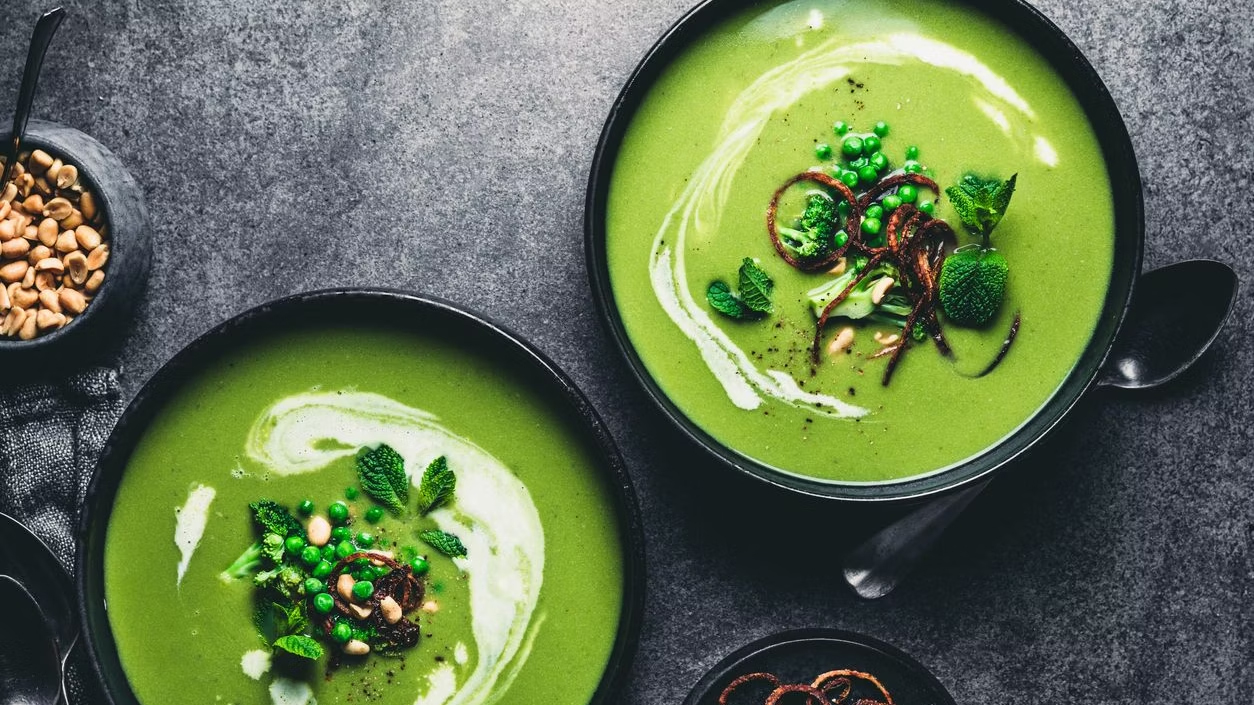There are few dishes that taste quite as much like spring as pea and mint soup. Light, green and gently sweet, it’s a celebration of renewal – a dish that arrives just as the world begins to wake up.
Whether served hot on a breezy day or chilled under soft sunlight, this simple soup has earned its place as a springtime staple, beloved for its freshness, its colour and its quiet elegance.
Peas have been part of the human diet for thousands of years. Cultivated since at least 7,000 BCE, they were a vital food source across ancient civilisations, including in Egypt, Greece and Rome. In their dried form, peas sustained people through harsh winters, boiled into broths and porridges. But it wasn’t until the Middle Ages that fresh green peas – eaten young and sweet – gained popularity in Europe, eventually becoming a delicacy in aristocratic kitchens.
By the 17th century, ‘eating fresh peas’ had become fashionable in France and England alike, where early varieties were prized not just for flavour, but for their association with new life and prosperity. Pea soup followed naturally – a way to celebrate the arrival of spring’s first green harvest in a form that was both nourishing and refined.
The pairing of peas with mint is a relatively recent addition, though one that feels inevitable. Mint, with its cool brightness, cuts through the soup’s sweetness and adds a layer of aromatic complexity. The combination reflects a broader tradition of using herbs to lift and balance dishes. It’s a match that speaks to the season’s character: fresh, light and quietly joyful.
Traditionally, pea and mint soup is made with green peas – either fresh or frozen – gently sautéed with onions or leeks, simmered in stock, and blended until smooth. Mint is added either during cooking or just before blending, depending on the desired intensity. Some versions are enriched with cream or crème fraîche, while others stay lean and herb-forward. The soup’s versatility means it adapts to both rustic and refined settings.
In Britain, it’s a mainstay of spring cooking – often served in May and June when peas are at their best. In France, variations include potage Saint-Germain, named for the Parisian suburb where fresh pea soups were particularly fashionable in the 19th century.
In Cyprus, peas are planted in winter and harvested in spring, often appearing in stews, rice dishes, or served simply with olive oil and lemon. While the pea and mint combination isn’t traditional, it has found its way onto the island’s contemporary tables, offering a light and refreshing alternative to heavier fare as the days grow warmer.







Click here to change your cookie preferences